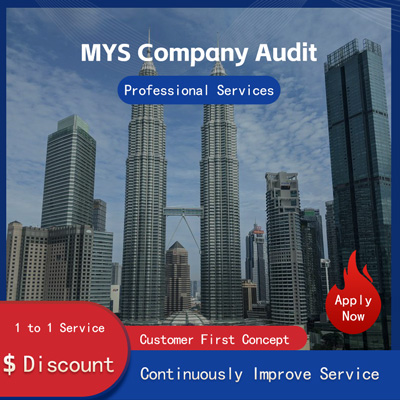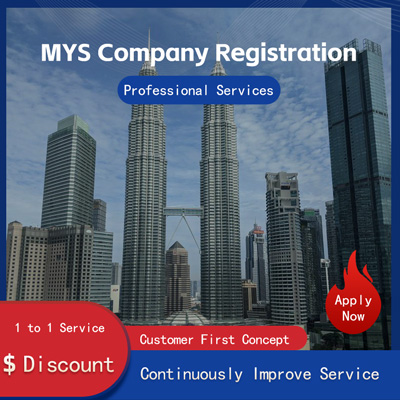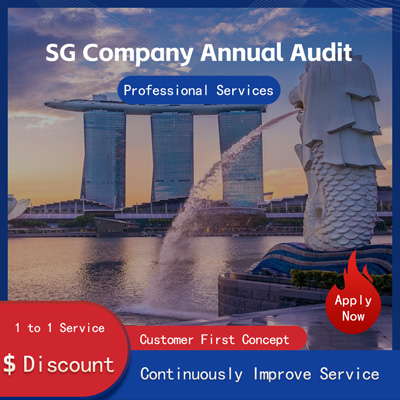
Marvelous Solutions to VIE Structure Tax Challenges Unlocking New Opportunities in Wealth Management
How to Skillfully Address Tax Issues in a VIE Structure Unlocking New Opportunities in Wealth Management
In the context of deepening globalization, cross-border business operations and capital flows have become the norm. The VIE structure Variable Interest Entities, as a key tool for Chinese companies to enter the global market, is drawing increasing attention from entrepreneurs and investors. However, with tightening international tax regulations, skillfully managing tax issues within VIE structures is not only crucial for regulatory compliance but also directly impacts the efficiency of cross-border wealth allocation and succession planning.

I. Basic Principles and Tax Challenges of VIE Structures
A VIE structure typically refers to a framework in which an offshore listing entity exerts control over a domestic operating entity through contractual arrangements rather than direct equity ownership, thereby achieving consolidated financial reporting. This structure is widely used in sectors such as internet technology, education, and media in China, especially in industries restricted to foreign investment.
While VIE structures offer advantages in navigating regulatory barriers, they also pose several tax challenges. First, the absence of a direct equity link between offshore investors and domestic entities complicates profit distribution and may raise concerns among tax authorities regarding profit shifting or artificial tax arrangements. Second, varying levels of recognition of VIE structures across jurisdictions can lead to disputes over tax residency and the risk of double taxation.
II. Recent Tax Policy Developments and Their Impact on VIE Structures
Since 2025, global tax oversight has become increasingly stringent. Chinese tax authorities have intensified their management of cross-border tax sources, while the OECD-led Two-Pillar international tax reform-particularly Pillar Two, which enforces a global minimum tax rate of 15%-has gradually taken effect, raising the bar for multinational tax planning.
For example, the State Taxation Administration’s June 2025 announcement of measures to further optimize the tax environment emphasized enhanced cross-border tax services and compliance guidance for outbound enterprises. This signals that companies using VIE structures for overseas financing and listings must now place greater emphasis on tax compliance, particularly in areas such as profit repatriation, transfer pricing, and disclosure of related-party transactions.
In August 2025, a well-known internet company was required by tax authorities to pay back taxes amounting to hundreds of millions of yuan during an offshore restructuring process, drawing widespread market attention. This case illustrates that tax authorities are strengthening their ability to scrutinize the contractual control chains within VIE structures. Going forward, companies must prioritize substantive compliance in their tax planning strategies.
III. Key Strategies for Effective Tax Planning
In the face of an increasingly complex regulatory environment, companies should consider the following strategies when designing and operating VIE structures
1. Clarify Tax Residency and Profit Allocation
It is essential to clearly define the tax residency status of each entity within the VIE structure and appropriately allocate profits. For instance, if an offshore holding company is deemed to be managed and controlled in China, it may face the risk of double taxation. When establishing offshore entities, companies should carefully evaluate the local tax regime and applicable tax treaties with China.
2. Optimize Profit Repatriation Channels
When repatriating profits from domestic entities to offshore holding companies, companies should make full use of tax treaties and preferential policies such as reduced withholding tax rates. Establishing intermediate holding companies in jurisdictions like Singapore or the Cayman Islands can help minimize cross-border tax burdens.
3. Strengthen Related-Party Transaction and Transfer Pricing Management
Related-party transactions, such as service fee payments and contractual control arrangements, are common in VIE structures. Companies should establish reasonable pricing mechanisms and maintain complete documentation to withstand potential transfer pricing audits.
4. Align with BEPS and Pillar Two Compliance Requirements
As the OECD’s Base Erosion and Profit Shifting BEPS initiative progresses and the global minimum tax regime takes effect, companies must reassess whether the profit distribution under their VIE structures aligns with economic substance principles, to avoid triggering top-up tax liabilities due to profit concentration in low-tax jurisdictions.
IV. New Opportunities in Wealth Management
Although VIE structures present tax planning challenges, they also open up new opportunities for high-net-worth individuals in wealth management. Through strategic tax planning and asset allocation, VIE structures can serve as powerful tools for cross-border wealth succession and value preservation.
First, VIE structures offer entrepreneurs a channel for overseas asset diversification. Holding equity or other assets through offshore holding companies can help mitigate risks associated with exposure to a single market.
Second, VIE structures can serve as the foundation for long-term wealth succession mechanisms such as family trusts and charitable foundations. For example, placing offshore holding company shares into a family trust can help maintain long-term control over family businesses while achieving tax efficiency.
With the growing demand for cross-border investment among Chinese individuals, VIE structures also provide private investors with access to overseas capital markets. Through legal and compliant tax planning, individual investors can reduce their tax burden while achieving global asset diversification.
V. Conclusion
In today’s environment of tightening global tax regulation and increasing cross-border wealth mobility, tax planning within VIE structures has become a critical issue for both enterprises and high-net-worth individuals. Skillfully addressing tax challenges in VIE structures not only enhances the compliance and efficiency of cross-border operations but also unlocks new dimensions in wealth management.
Faced with evolving tax policies and regulatory landscapes, proactive planning and scientific tax strategies are essential to achieving stable wealth growth and effective intergenerational transfer while maintaining full compliance.
Helpful (0)
No help (0)
Still have questions after reading? More than 98,000 users have contacted us. Please fill in the following information to obtain business information.

Previous Article
Singapore vs. Hong Kong Company Registration Choosing the Right Wealth Path for You
Jul 18, 2025Service Scope
MoreRecommended for You
- The Real Deal Behind Registering a Company in Singapore Hidden Challenges Risks No One Tells You!
- How to Register a Foundation Company in Singapore Key Steps Things to Watch Out For!
- Audit Cost Insights for Singapore Companies Key Factors and Market Trends Explained
- How to Start a Company in Singapore as a Foreigner? A Comprehensive Guide to the Registration Process and Secrets!
- S’pore vs HK Banks Which Is Better for Wealth Management? Find Out the Smart Choice
- How to Easily Open a Singapore Bank Account in Mainland China? Ultimate Guide + Practical Tips
- What's It Really Like to Start a Biz in Singapore? Full Breakdown from Registration to Operations
- NRA Bank Confirmation Revealed Secrets You Must Know About Different Account Types
- How to Smoothly Open a Singapore Bank Account in China? A Guide to the Process and Key Points to Note
- U.S. Embassy in China Consular Section One-Stop Service, How to Process Notarization More Efficiently?
- How to Open a US Bank Account for a Hong Kong Company? Essential Requirements Explained!
- Want to Open an Account at Standard Chartered Bank in Beijing? Understand the Requirements in One Article!
- Which U.S. States Have the Craziest Economic Policies? One Chart Explains All!
- How to Get a WY Business License Must-Know Tips Before Starting Your Biz!
- Can You Find U.S. Company Registration Info in China? A Clear Guide!
- How Long Does It Take to Cancel a US Bank Card? Uncovering the Process and Truth Behind It
- How Much Does a Power of Attorney Cost in the US? You Might Not Know These Details
- Opening a Personal US Account Isn't That Hard - Just Follow These Steps and Tips
- How to Read U.S. Company Quarterly Reports A Comprehensive Guide to Fundamentals and Key Details
- U.S. Corp Account Opening Guide Secrets to Effortlessly Kickstart Global Biz


 ONE
ONE








Customer Reviews
Small *** Table
December 12, 2024The experience was very good. I was still struggling to compare it with other companies. I went to the site a few days ago and wanted to implement it as soon as possible. I didn't expect that everything exceeded my expectations. The company is very large, with several hundred square meters. The employees are also dedicated and responsible. There is also a wall of certificates. I placed an order on the spot. It turned out that I did not make a wrong choice. The company's service attitude is very good and professional. The person who contacted me explained various things in detail in advance. After placing the order, the follow-up was also very timely, and they took the initiative to report the progress to me. In short, I am very satisfied and recommend this company!
Lin *** e
December 18, 2024When I first consulted customer service, they recommended an agent to me. They were very professional and patient and provided excellent service. They answered my questions as they came in. This 2-to-1 service model is very thoughtful. I had a lot of questions that I didn’t understand, and it’s not easy to register a company in Hong Kong. Fortunately, I have you.
t *** 7
December 19, 2024I originally thought that they only did mainland business, but I didn’t expect that they had been doing Hong Kong business and were doing very well. After the on-site interview, I decided to ask them to arrange the registration of my Hong Kong company. They helped me complete it very quickly and provided all the necessary information. The efficiency was awesome. It turns out that professional things should be done by professionals.👍
b *** 5
December 16, 2024In order to register a company in Hong Kong, I compared many platforms and stores and finally chose this store. The merchant said that they have been operating offline for more than 10 years and are indeed an old team of corporate services. The efficiency is first-class, and the customer service is also very professional.